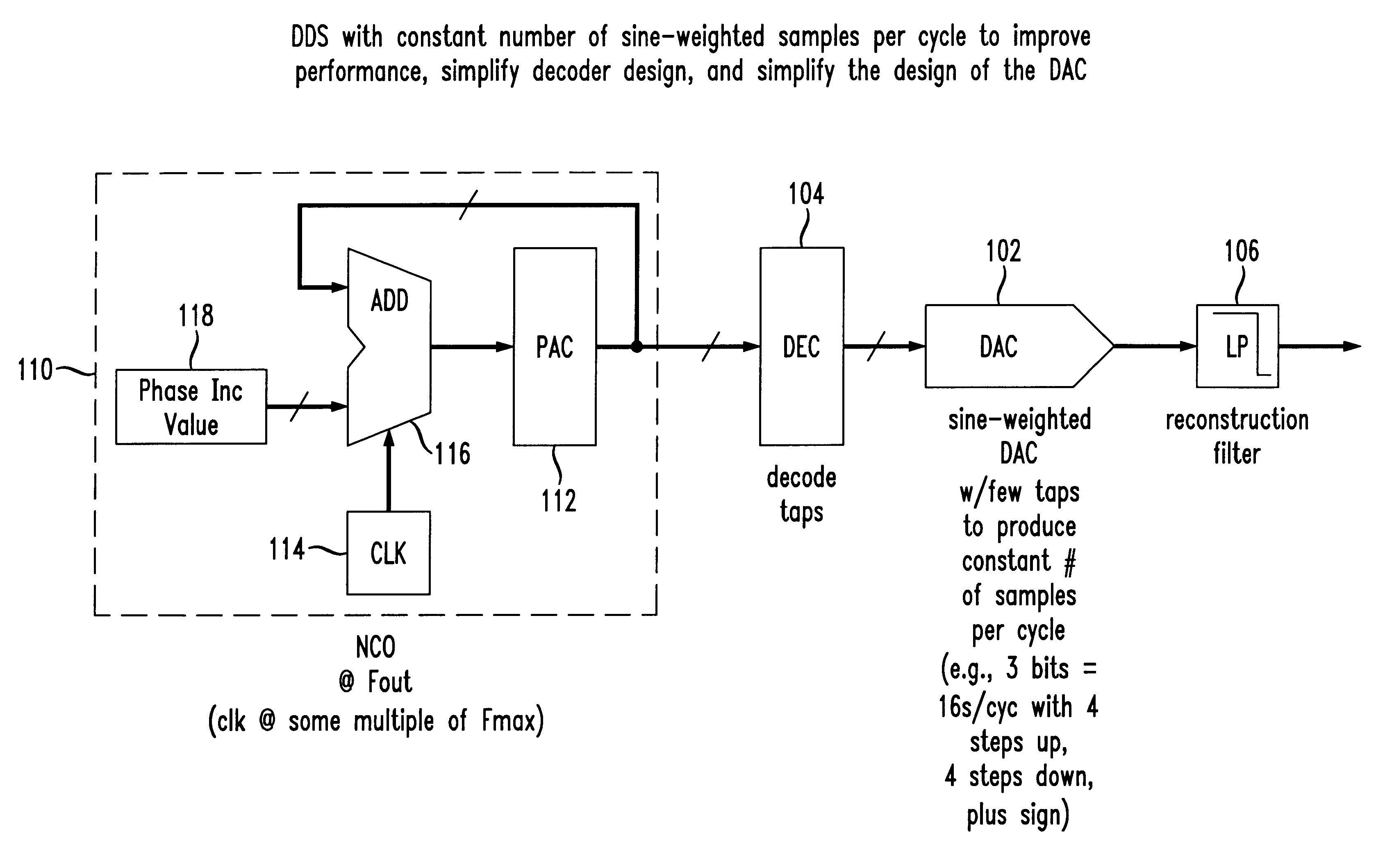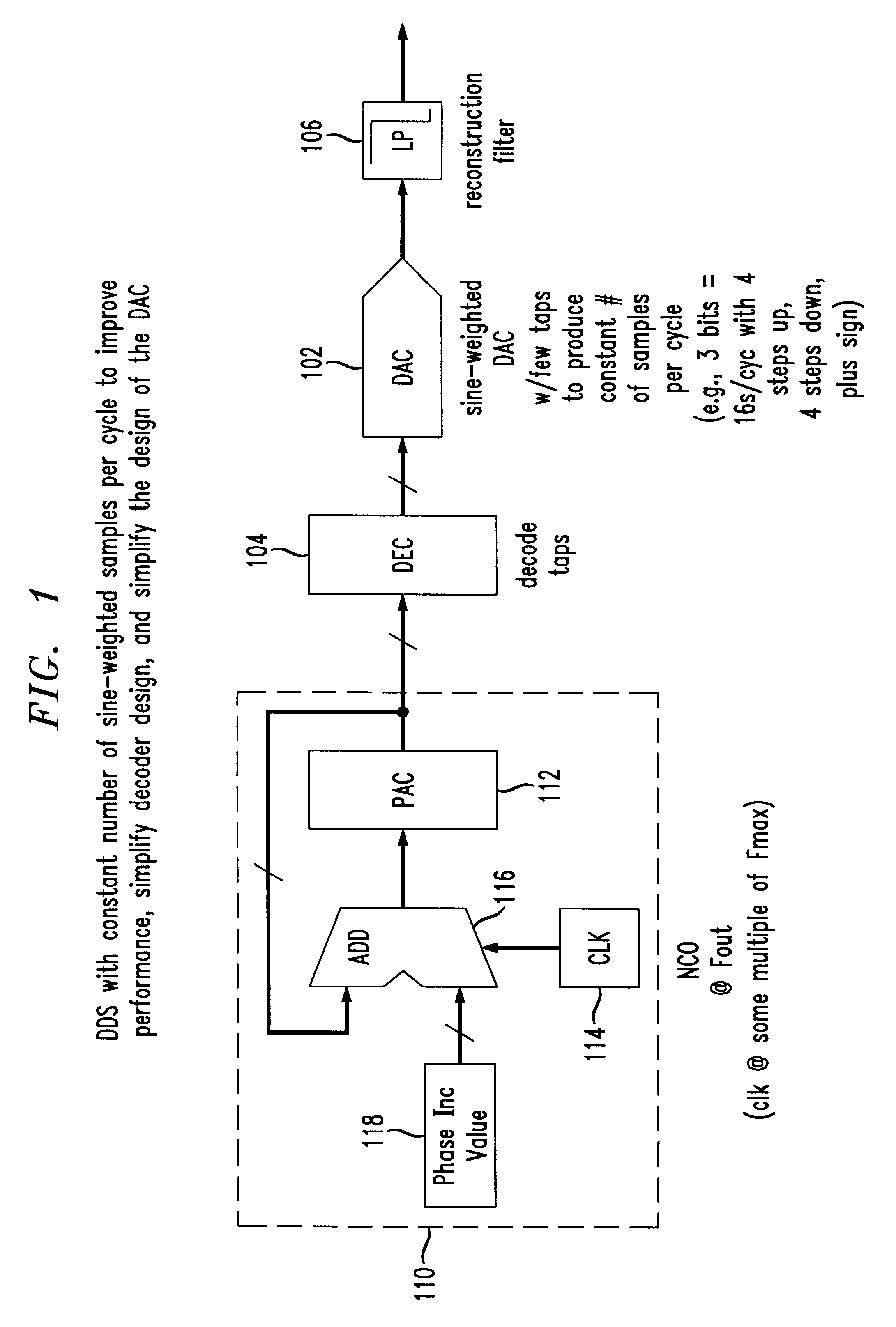Direct digital synthesis using a sine weighted DAC
a digital synthesizer and sine weight technology, applied in the direction of digital-analog converters, automatic control of pulses, instruments, etc., can solve the problems of reducing the steps per cycle to very few steps, reducing the spurious performance of a conventional dds, and reducing the steps per cycl
- Summary
- Abstract
- Description
- Claims
- Application Information
AI Technical Summary
Problems solved by technology
Method used
Image
Examples
Embodiment Construction
The present invention provides a novel direct digital synthesis system architecture which employs a numerically-controlled oscillator (NCO), some decoding logic, and a sine-weighted resistor string-based digital-to-analog converter (DAC) with significantly fewer analog outputs available than conventional DDS systems to provide improved spurious performance (relative to the number of bits of resolution required of the DAC), extended frequency of operation, reduced chip area, and reduced power consumption relative to conventional DDS techniques. One skilled in the art could apply these same principles to other sine-weighted DAC architectures within the principles of the present invention.
The architecture outlined herein substantially avoids these limitations by employing a constant number of steps per cycle in the stepped approximation of the output sine wave generated by the DAC. This is achieved by using a numerically-controlled oscillator (a clocked adder / phase accumulator), follow...
PUM
 Login to View More
Login to View More Abstract
Description
Claims
Application Information
 Login to View More
Login to View More - R&D
- Intellectual Property
- Life Sciences
- Materials
- Tech Scout
- Unparalleled Data Quality
- Higher Quality Content
- 60% Fewer Hallucinations
Browse by: Latest US Patents, China's latest patents, Technical Efficacy Thesaurus, Application Domain, Technology Topic, Popular Technical Reports.
© 2025 PatSnap. All rights reserved.Legal|Privacy policy|Modern Slavery Act Transparency Statement|Sitemap|About US| Contact US: help@patsnap.com



